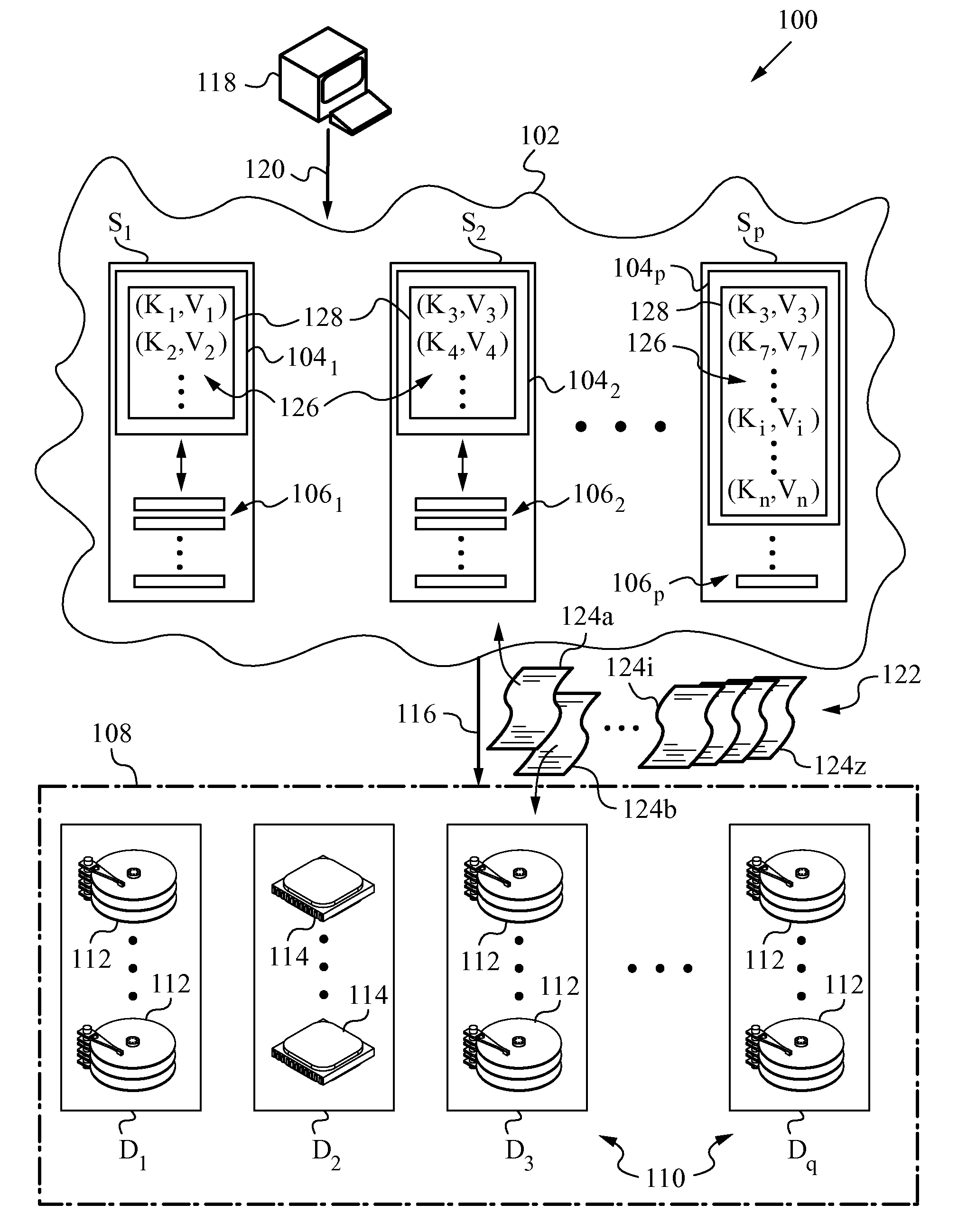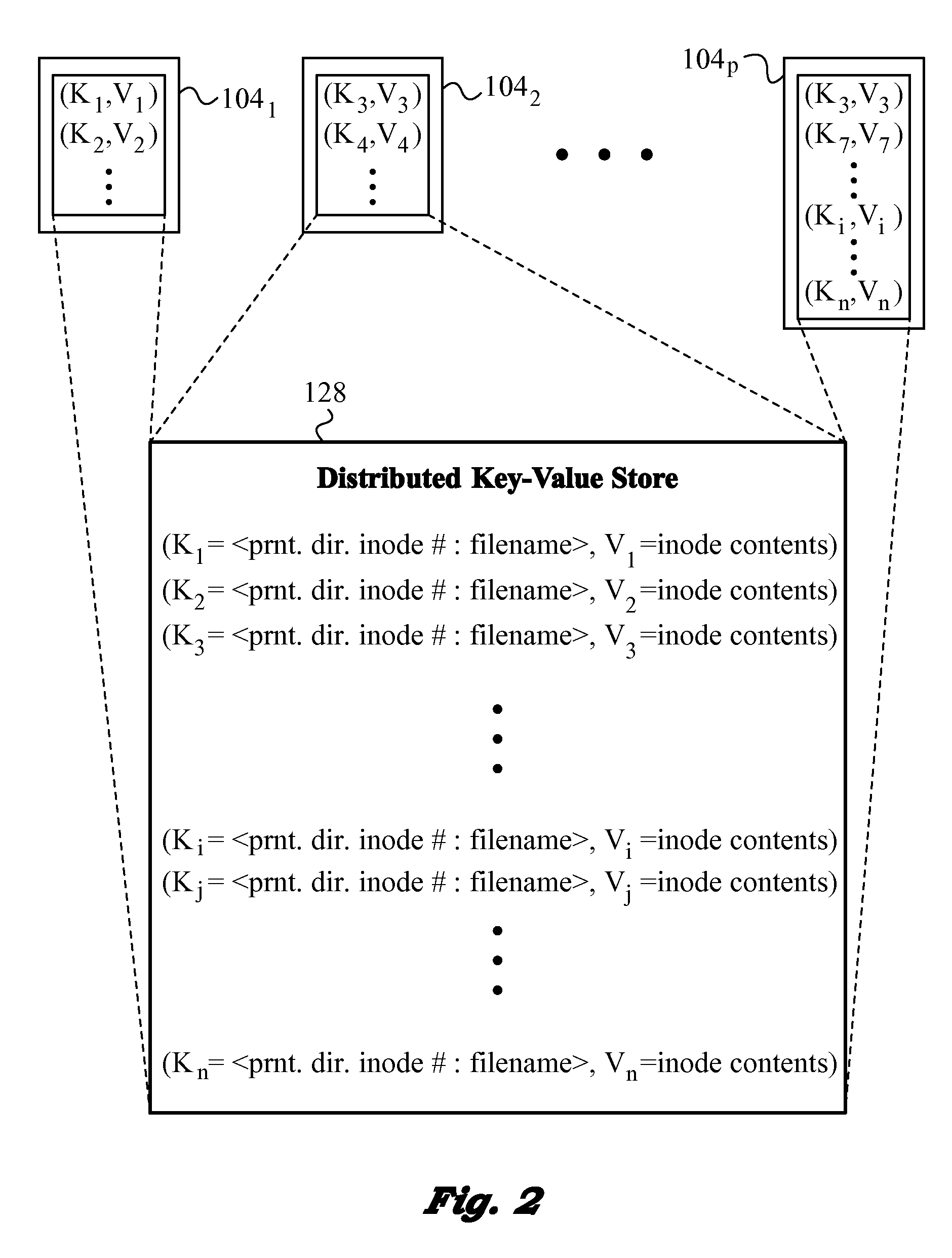Scalable Distributed Metadata File System using Key-Value Stores
a metadata file system and key value technology, applied in the field of metadata, can solve the problems of limiting the storage capacity of the filesystem, single-master design has fundamental scalability, performance and fault tolerance limitations, and data sets are far too large to store on a single computer, and achieves the effect of high performance and more scalabl
- Summary
- Abstract
- Description
- Claims
- Application Information
AI Technical Summary
Benefits of technology
Problems solved by technology
Method used
Image
Examples
Embodiment Construction
[0026]The present invention will be best understood by initially referring to the diagram of a distributed data network 100 as shown in FIG. 1. Network 100 utilizes a number of servers S1, S2, . . . , Sp, which may include hundreds or even thousands of servers. In the present embodiment, servers S1, S2, . . . , Sp belong to a single cluster 102. Each of servers S1, S2, . . . , Sp has corresponding processing resources 1041, 1042, . . . , 104p, as well as local storage resources 1061, 1062, . . . , 106p. Local storage resources 1061, 1062, . . . , 106p may include rapid storage systems, such as solid state flash, and they are in communication with processing resources 1041, 1042, . . . , 104p of their corresponding servers S1, S2, . . . , Sp. Of course, the exact provisioning of local storage resources 1061, 1062, . . . , 106p may differ between servers S1, S2, . . . , Sp.
[0027]Distributed data network 100 has a file storage cluster 108. Storage cluster 108 may be collocated with ser...
PUM
 Login to View More
Login to View More Abstract
Description
Claims
Application Information
 Login to View More
Login to View More - R&D
- Intellectual Property
- Life Sciences
- Materials
- Tech Scout
- Unparalleled Data Quality
- Higher Quality Content
- 60% Fewer Hallucinations
Browse by: Latest US Patents, China's latest patents, Technical Efficacy Thesaurus, Application Domain, Technology Topic, Popular Technical Reports.
© 2025 PatSnap. All rights reserved.Legal|Privacy policy|Modern Slavery Act Transparency Statement|Sitemap|About US| Contact US: help@patsnap.com



